How To Make Homemade Dog-Food Without Even Breaking A Sweat
Dog-food companies want you to believe that making your own homemade dog-food is too complicated and time-consuming to manage on your own.
“The very first thing she did when I brought home my livestock guardian dog, was take a massive dump on the living room carpet. It was then, as I marvelled at that pile of sh*t, I realized just how much food this working dog was going to eat. I wondered how I would ever afford it on my farm’s bootstrap budget. At that moment I knew, if I was going to keep 2 large dogs on the farm, I would have to learn how to make my own homemade dog food.”
@ Runamuck AcresHow’s that for an opening paragraph? 😁 This week’s edition is a guest post by
who calls herself “your friendly neighborhood farmer.” Sam is a powerhouse of a woman who singlehandedly runs a whole conservation farm. Alone. As a woman and single parent. 👏👏She is incredible and I get tired just reading her energetic stories at Runamuk Acres Conservation Farm. I highly encourage you to visit her Substack where you will find recantings of a lady-farmer and tree-hugging activist from Western Maine. She writes about self-reliance and sustainability, agriculture and the local food movement, as well as authenticity.
How To Make Homemade Dog Food Without Even Breaking A Sweat
On the larger side for a black lab, Murphy and I had been together some 7 years before Beebe the Brave came into our lives. I’d been buying the Diamond Naturals Senior kibble for $50 a bag at Tractor Supply. At 3 cups per day, that would last us about a month.
Considered an “extra-large” breed, the Central Asian Shepherd is known as the lion of the dog world. They’re very large and very muscular, highly intelligent and incredibly loyal animals. 4 years old now and weighing in at 104 pounds, Beebe eats a whopping 12-14 cups of food per day, depending upon the season.
If I were still buying commercial kibble, that would run me anywhere from $180-$300/month just to feed Beebe. Add another $50 for Murphy’s food, include the taxes, and we’re talking almost $400 a month in dog food!
Instead, I’m feeding both dogs a healthy and exceptionally nutritious diet for only about $75 a month by making my own homemade dog food from scratch.
Disclaimer: I am NOT a Veterinarian!
As a farmer, I am responsible for ensuring the health and well-being of the many animals in my care. Over the years, I’ve learned a lot about providing balanced diets and nutrition. While I have a wealth of experience and information to share, I am by no means a licensed veterinarian and would encourage you to speak with your dog’s doctor before implementing any new diet.
Bear in mind, some veterinarians might be more receptive to the idea than others. Ultimately, however, it is up to you to perform your own research and make an informed decision based on the knowledge you have on hand.
Do Your Homework
I’ve taken the liberty of compiling a bit of information here to get you started, but before taking the plunge, I urge you to do your homework. All diets are not created equal. To provide a balanced meal for your pet, you’ll want to have a firm grasp on what dogs can and cannot eat, as well as the nutritional requirements for your dog’s specific breed, age, weight and activity level. If your dog has any allergies or health issues, you’ll also want to research how best to meet those needs.
Frequently Asked Questions:
Is homemade dog food healthy?
Absolutely! Depending upon the ingredients you incorporate, homemade dog food can be just as healthy as the commercial stuff—if not healthier, since it won’t have the preservatives that kibble requires to keep it shelf-stable for long periods. It’s crucial, however, to acknowledge nutritional requirements to provide your pet(s) with a balanced diet.
What can dogs eat?
Dogs can eat many of the same things as people, which makes feeding them real food a mercifully simple affair. In my own experience, I’ve found using very basic ingredients, and avoiding processed foods along with excess seasonings and spices, to be the key to feeding my dogs a superior diet. Check out this ebook I found from Wellbeing for Dogs, which goes into more detail about what your dog can and cannot eat, as well as the role of each food group in your pet’s diet.
The Real Food Revolution for Dogs (free PDF download)
What should you NOT feed your dog?
Of course, we all know not to feed our dogs chocolate, but did you know that onion is toxic to dogs as well? Raw potato, too, especially the skins.
For a full list, check out this article from WebMD regarding Toxic and Dangerous Foods Your Dog Should Never Eat.
How do I ensure nutrition?
In doing research for this post, I found the most common complaint and objection vets have to homemade dog food is the potential for nutritional deficiencies. Some ingredients pack more punch than others, that’s why it’s so important to do your homework and learn what’s best for your dog,
With kelp meal already on hand for the farm, I simply add a tablespoon to every batch of rice I make for my dogs, ensuring they get those all-important macro and micro-nutrients (this was supported by my vet!). However, if you don’t keep random 40-pound bags of kelp meal lying around, you can purchase canine-specific supplements online and have them shipped directly to your door.
This is one example I found at Amazon.
What’s the deal? Cooked vs raw?
Just as diet fads exist for people, so too do they exist for dogs and the raw-food diet has been all the rage lately. Advocates report improved skin and coat, cleaner teeth and higher energy levels in their dogs, but the risk of bacteria to dogs and humans are higher.
While I do believe a raw-food diet is going to be better than commercial kibble, I have a hard time getting behind it, personally. But, you don’t have to take my word for it! I found a lot of strongly pro or strongly-against articles from various proponents online, but this piece from WebMD seems like the most unbiased source to get you started.
Raw Dog Food Diet: Benefits and Risks
What Are My Dogs Eating?
This comes up a lot with guests to our farmstay. After I’ve served their breakfast, I’ll move on to feeding the dogs and livestock, starting with Murphy. An all-around farm dog, Murphy is my constant companion and lives in the house, accompanying me almost everywhere. The typical lab, he loves AirBnB and thinks all guests are there for him, lol.
I’m feeding both dogs a healthy and exceptionally nutritious diet for only about $75 a month by making my own homemade dog food from scratch.
Guests are often surprised when they see the dish I place on the floor for the dog. They want to know what he’s eating, and so I tell them, “Chicken stew on rice.”
It is fortunate for my budget that I can feed my dogs a diet consisting largely of chicken and rice. We have no allergies or serious health issues to contend with in our household, and I don’t subscribe to the raw food theory. As a result, I’ve found this to be the most cost-effective and time-efficient way for me to feed my 2 large dogs a superior diet at a fraction of the cost.
Generally, they get rice topped with a very basic chicken stew at a rate of about 60/40 (60% rice to 40% stew).
This might fluctuate a bit, depending upon what’s on sale or in-season, what I have on hand to be used up and how on the ball I am with my planning and preparation.
The weather, too, can play a role in how I feed them. For example, Beebe, who lives outside year-round, gets extra fats and more protein during Maine’s frigid winter nights, as well as more generous servings to help her maintain body temperature.
How I Make Homemade Dog Food
When it comes to transitioning to homemade dog food, probably the biggest obstacle for most pet owners is the amount of time and planning that goes into the chore. For me, picking the bones out of the chicken is the most onerous part of the job. Though, getting caught at meal-time with no rice leaves me open to receiving “The Stare” from Murphy, as he waits for me to cook the rice or find some alternative in a pinch.
If you’re committed to making your own homemade dog food, it’s crucial to establish a routine that works for you, plan ahead, and set yourself up for success.
Step 1: Sourcing Ingredients
If I had more room in the budget, I’d shop elsewhere, or step up the quality of the ingredients I’m using to make my homemade dog food. As it is, mostly I’m sourcing through my local grocery store and the nearest Wal-Mart. You can purchase your ingredients wherever you prefer to shop, though to get the best value you'll want to buy it in bulk whenever possible.
Alternating white and brown, I buy the rice in 20-pound bags at Walmart, as well as the canned veggies, purchasing the Great Value brand a flat at a time. Typically, 2) 20-pound bags of rice and a flat of 12 cans of veggies will last us a month. This just leaves me to purchase the protein source every week.
To get the best bang for my buck, I go on Monday mornings to the grocery store, capitalizing on any discounted meats leftover from the weekend. Usually, chicken leg quarters are the cheapest option, especially during the summer bar-b-que season.
Step 2: Make the “Stew”
To make the stew part of my homemade dog food, I’ll cook up the meat substance, starting it simmering in a large kettle of water while I’m cooking dinner. This is allowed to simmer for 2 or 3 hours so that all of the bone marrow and fat seeps into the broth.
When the meat is falling from the bone, I’ll shut off the burner and just leave the whole thing to steep and cool overnight. Don’t worry, it’s not going to spoil in those few hours because it will be hot for a long time!
Preferring to process the meat when it’s not scalding but before it’s completely cool, I tend to do this job first thing the next morning (after my coffee, but before I start the rest of my day). Because my sister lost a dog to an incident with a bone, we’re very meticulous about extracting all of the bones from the meats we serve our dogs.
Honestly, this is the most tedious part of the whole ordeal. To save time, I’ve learned it’s not necessary to cut the meat into chunks. Simply squish it between your fingers to break it into bite-sized pieces and add it back to the broth.
Next, dump in a few cans of vegetables, water and all, stir it up and then bottle it in quart-sized mason jars. Two family packs of chicken leg quarters and 3 cans of vegetables generally make us 9 quarts of “stew”, enough to last us 7 or 8 days.
These will keep in the refrigerator for up to a week.
Cooking the Rice
Because I don’t have the refrigerator space to store the amount of rice I’d need to feed my dogs for a week, I make it in smaller batches as needed. If you have smaller dog(s), you can probably get away with cooking a big kettle full on Sunday night. Packaging it in Tupperware or ziplock bags in portioned serving sizes to use throughout the week is a huge time-saver.
What to Do in a Pinch
You get really good at cooking rice when you do it this often. But, if life gets away from you and you should find yourself without pre-cooked rice when dinner-time rolls around, there are a couple of alternatives you can use in a pinch.
Bread is the easiest go-to when you’re caught unprepared—though, I’d be more reluctant to feed it to my dogs if I weren’t also making my own homemade bread. Unfortunately, the bulk of breads available at the grocery store are heavily fortified with preservatives and fillers that I don’t believe any of us need—human or canine. Even still, there have been times when I’ve been out of rice, out of bread, and the only thing readily available at feeding time were hot dog buns. The dogs did not complain.
Quick oats are good in a pinch, too, as they cook up in minutes. Left-over noodles or mashed potatoes, if you happen to have them in the fridge, can also be supplemented.
Alternatives to Rice
By far, rice is the cheapest option available for feeding your furry canine companion. Yet, if your pet has a rice allergy, or if you’re looking to diversify their diet, these foods can be used as an alternative:
Any grain: oats, quinoa, barley, multi-grain mix, buckwheat, spelt, rye, millet etc.
Potatoes (not instant) and yams.
Pasta
Fruits & Vegetables
Even dogs need to eat their fruits and vegetables! According to Henrietta Morrison, author of Dinner for Dogs, about 20 to 30% of your dog’s diet should consist of fresh vegetables. In addition to being full of antioxidants and other phytonutrients, vegetables are an important source of minerals, vitamins and fibre in the diet, while fruits contain more minerals and vitamins, as well as enzymes that are easily digested. The alkaline element in fruit combined with its acids stimulates the liver and pancreas, providing a natural-laxative action.
Again, the only vegetables your dog shouldn’t have are onions (neither raw nor cooked!) and raw potatoes.
For more on veggies for your pup, take a look at this article from Care.com: Top 10 Vegetables for Dogs.
Get to Know Your Dog on a Whole New Level
It’s important to bear in mind that every breed and every individual has different dietary needs, tolerances and preferences. Go into your homemade dog food journey with a learning mindset and the knowledge that you’re getting to know your dog on a whole new level. This will enable you to create a diet that not only meets their needs but delights their palette as well.
Take Murphy and Beebe, for example:
Beebe’s breed, the central Asian Shepherd, has been less domesticated than labrador retrievers. Her digestive system is incredibly robust and can tolerate more than Murphy’s tummy will. When meats are borderline questionable, I can cook them up and feed them to Beebe and she’s fine. While, if I were to feed that same thing to Murphy, now a senior dog of 11, he’d be sick all night.
Beebe can also process spices (not talking heat here, but just seasonings, salt and pepper in general) and heavily processed foods better than Murphy. So if I’m trying to clean leftovers out of the fridge, I would add them to her dish and not Murph’s.
Meanwhile, oats seem to give Beebe diarrhea, while Murphy is just fine with them.
Our dogs have their own likes and dislikes, too—just as people do. While I haven’t found much that Murphy won’t eat, I have discovered Beebe has a thing about texture. This comes into play whenever I run out of stew and try feeding her rice and eggs. I always get a sour look that reads, “Where are the chunky bits?”
Thus, I’ve learned to keep a few cans of beans and fish, or frozen hot dogs on hand. They’re a pricey substitute, but good for emergencies.
You CAN Do It!
Recently, I wrote about self-reliance and how the industrialized society we live in seeks to incapacitate the masses.
“It’s all part of the same scheme: to first dumb down the population, removing inspiration and motivation, making the masses increasingly reliant upon “the experts”. Then, corporate interests jockey for position as that self-proclaimed “expert”—with the intention of parting you from your money.”
Corporate interests want us to believe these things are too hard.
Dog food companies want you to believe that making your own homemade dog food is too complicated and too time-consuming for you to manage on your own. Why? Money and control. Modern executive compensation practices drive these methods, infiltrating every industry. Infiltrating our schools, our homes and our lives.
For more on self-reliance, check out this piece I recently wrote:
I believe it’s time for us to start assuming responsibility for our own existence. We need to take back control of our own lives.
I once had guests to my farmstay come all the way from Argentina. In talking with these gentlemen (who happened to be fellow farmers, wouldn’t you know!), they pointed out that commercial dog food isn’t even available in most third-world countries. Yet, villagers all over the world still manage to keep dogs. They just feed them whatever’s on hand.
It doesn’t have to be so complicated!
The biggest argument vets and dog food companies can use in defence of commercial kibble is that it’s nutritionally balanced and by feeding a homemade diet you may inadvertently be leaving out various nutrients. But the same can be said of our own diets.
How many of us can say that our diet is 100% nutritionally balanced?
Personally, I believe that even if what I’m feeding my dogs isn’t 100% perfect, it’s still a helluva lot better than commercial dog foods. And you can’t beat the price.
While there are some things I am happy to allow industry to manage for me (ie: toilet paper), there are many instances where industry does not belong. Dog food is one of them.
I admit, it was a little scary and overwhelming at first, but now that I’ve been doing it for several years I’ll never go back to commercial dog food. Whether you want to save money, provide your pet with a superior diet, or reduce your dependence on the industrialized system, I promise you won’t regret learning how to make your own dog food.
Your friendly neighborhood farmer,
Sam
Whew! We made it to the end!
I acknowledge that was a LONG read but it was also incredibly informative and powerful, especially the part about “industry” convincing us we NEED hundred-dollar bags of commercial dog food. (Guilty!)
I have SO MUCH respect for what Sam is doing at Runamuck Acres Conservation Farm. She certainly takes the “lazy” out of humanhood!
If you’ve got comments or questions for Sam, feel free to drop them below!
And if you would like to support Sam’s conservation efforts by donating, click this image and leave her a tip!
Thank you for following along with the story of this lady-farmer! It is truly a privilege to live this life serving my family and community, and protecting wildlife through agricultural conservation. Check back soon for more updates from the farm, and be sure to follow @RunamukAcres on Instagram or Facebook!







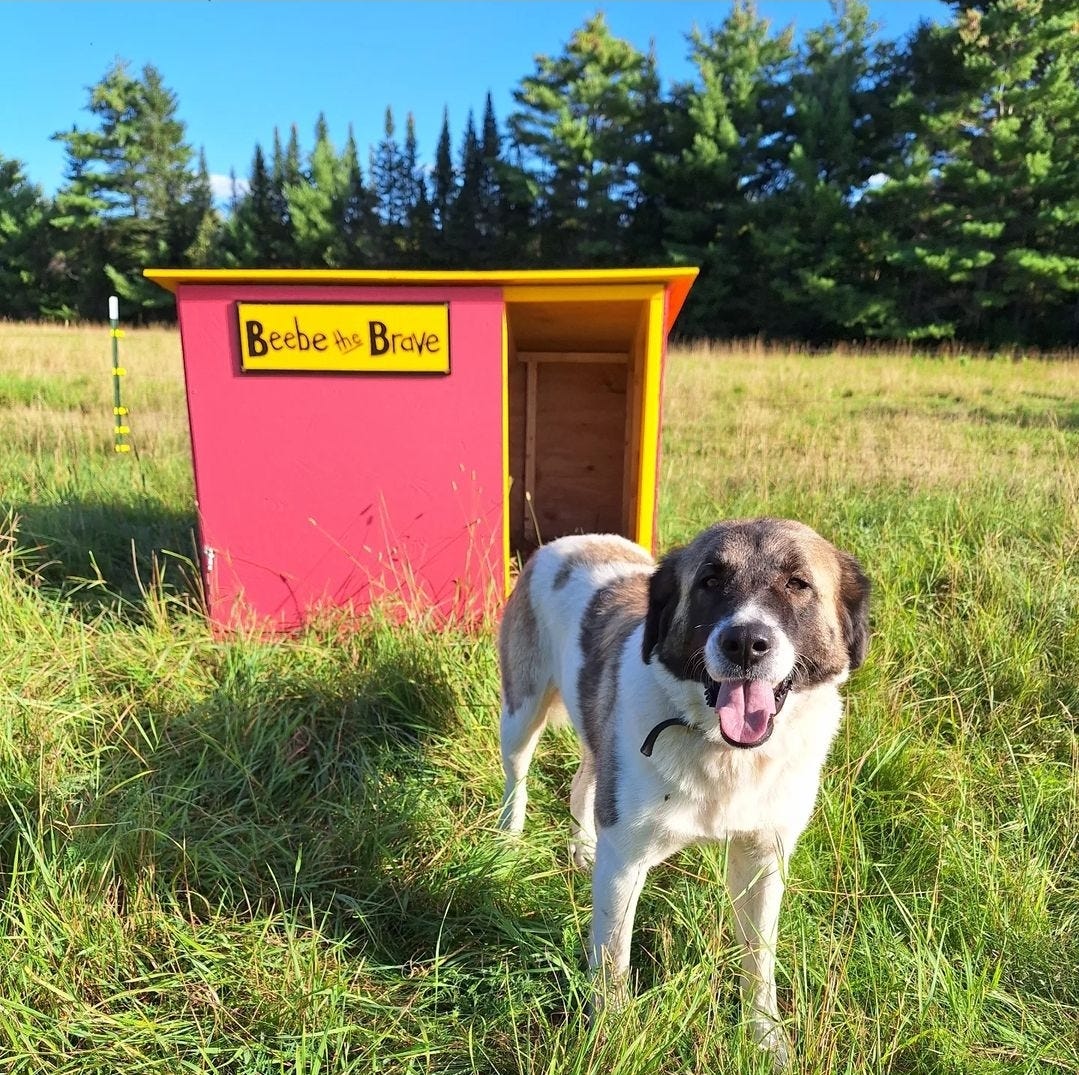

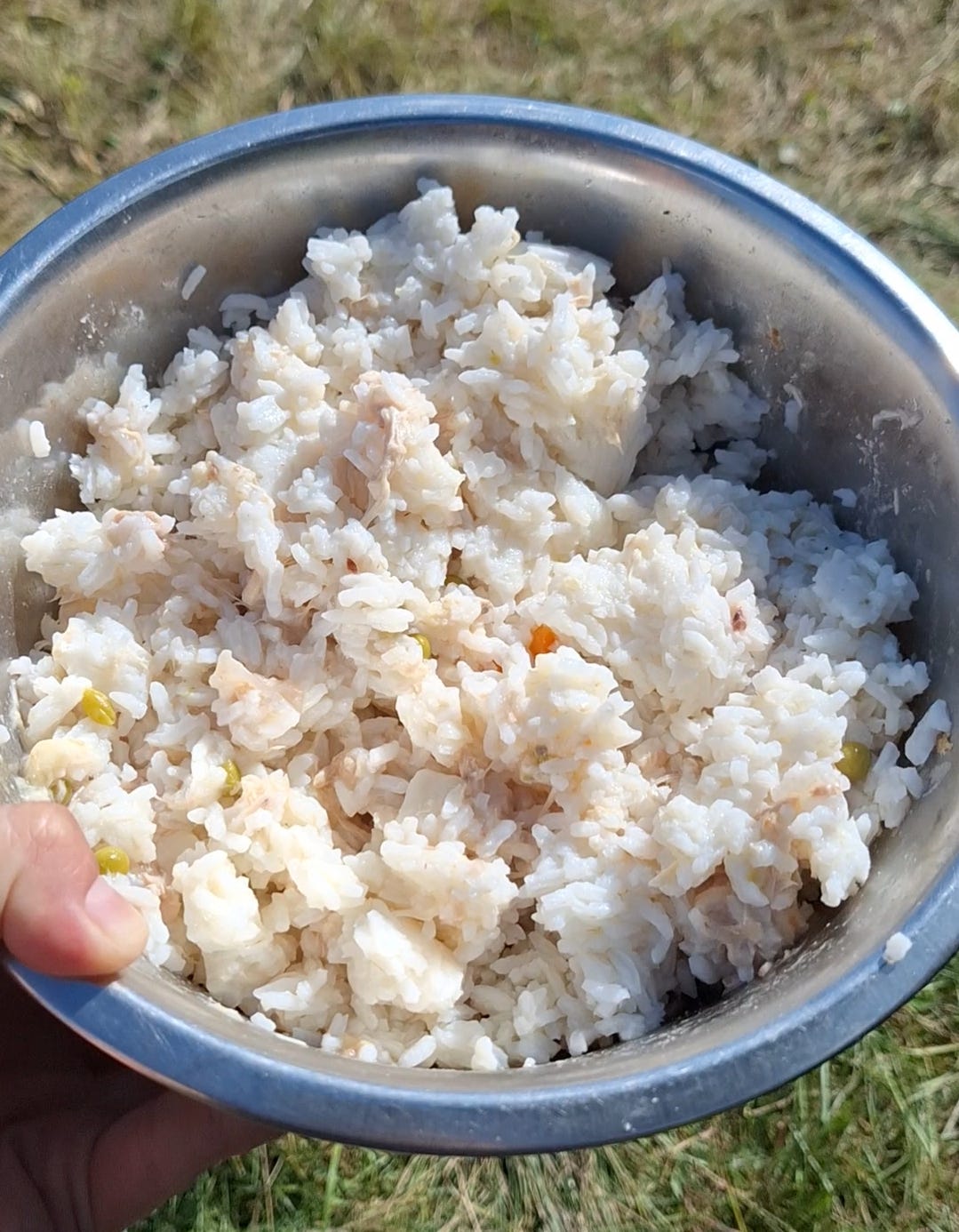
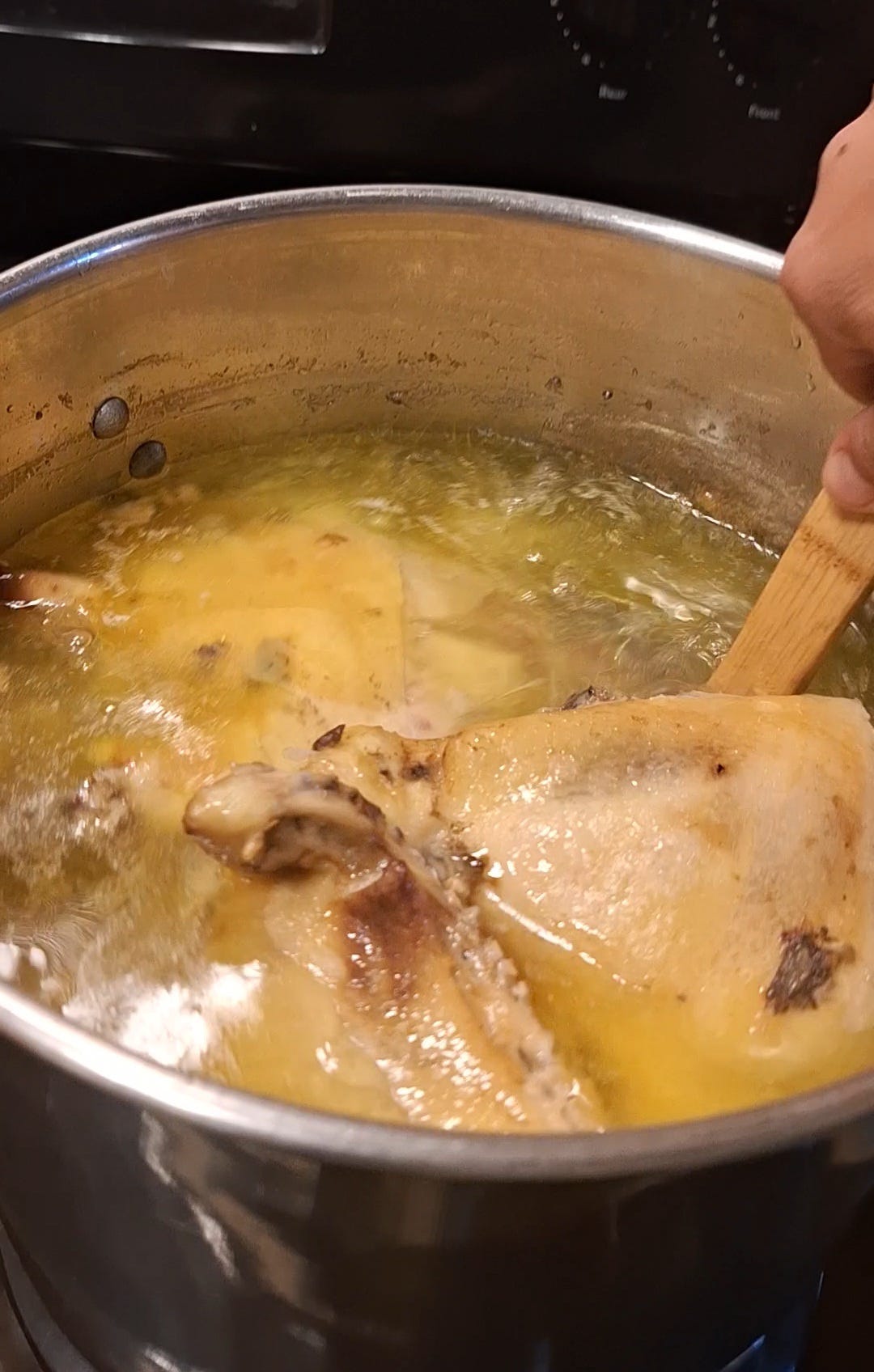
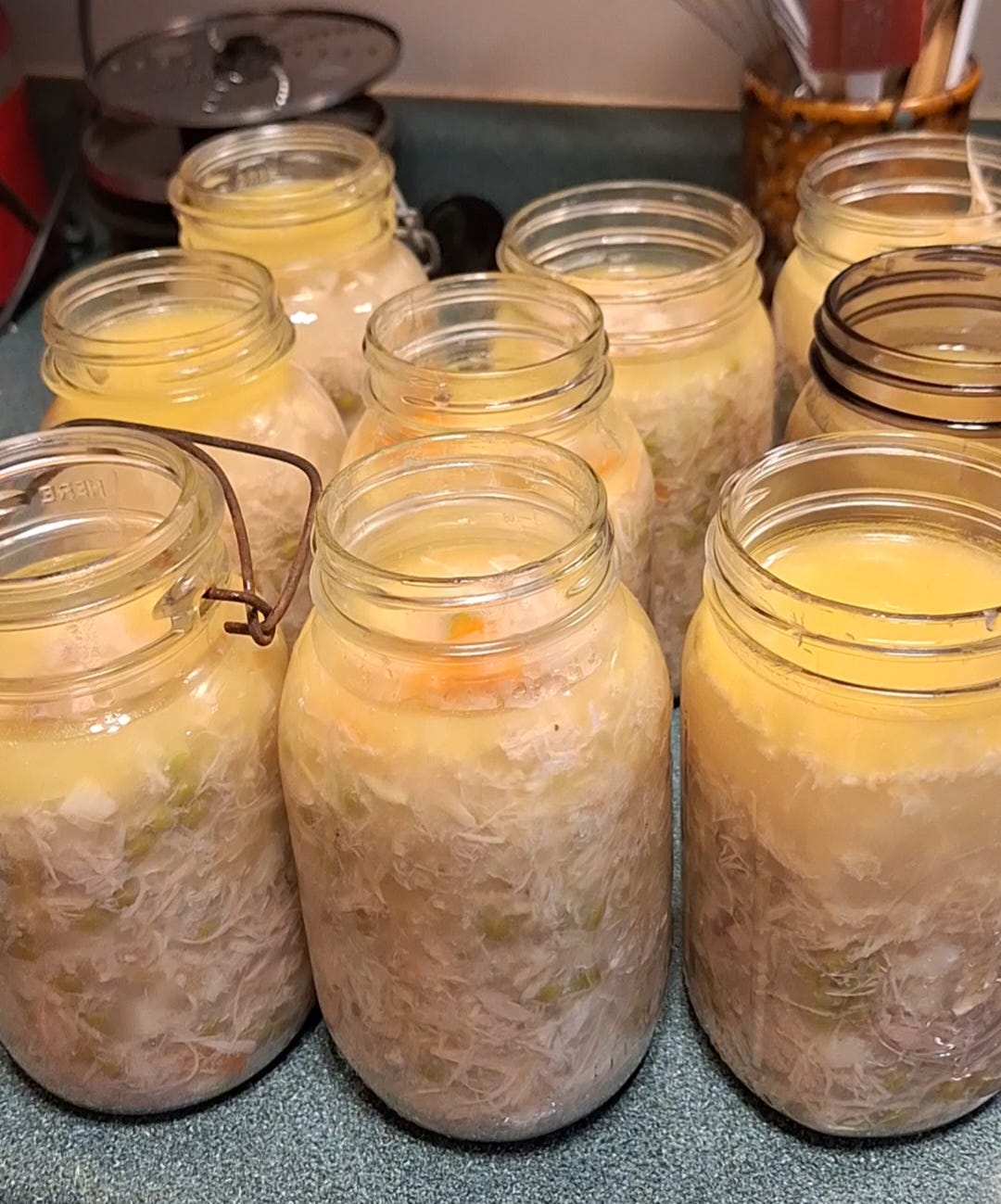
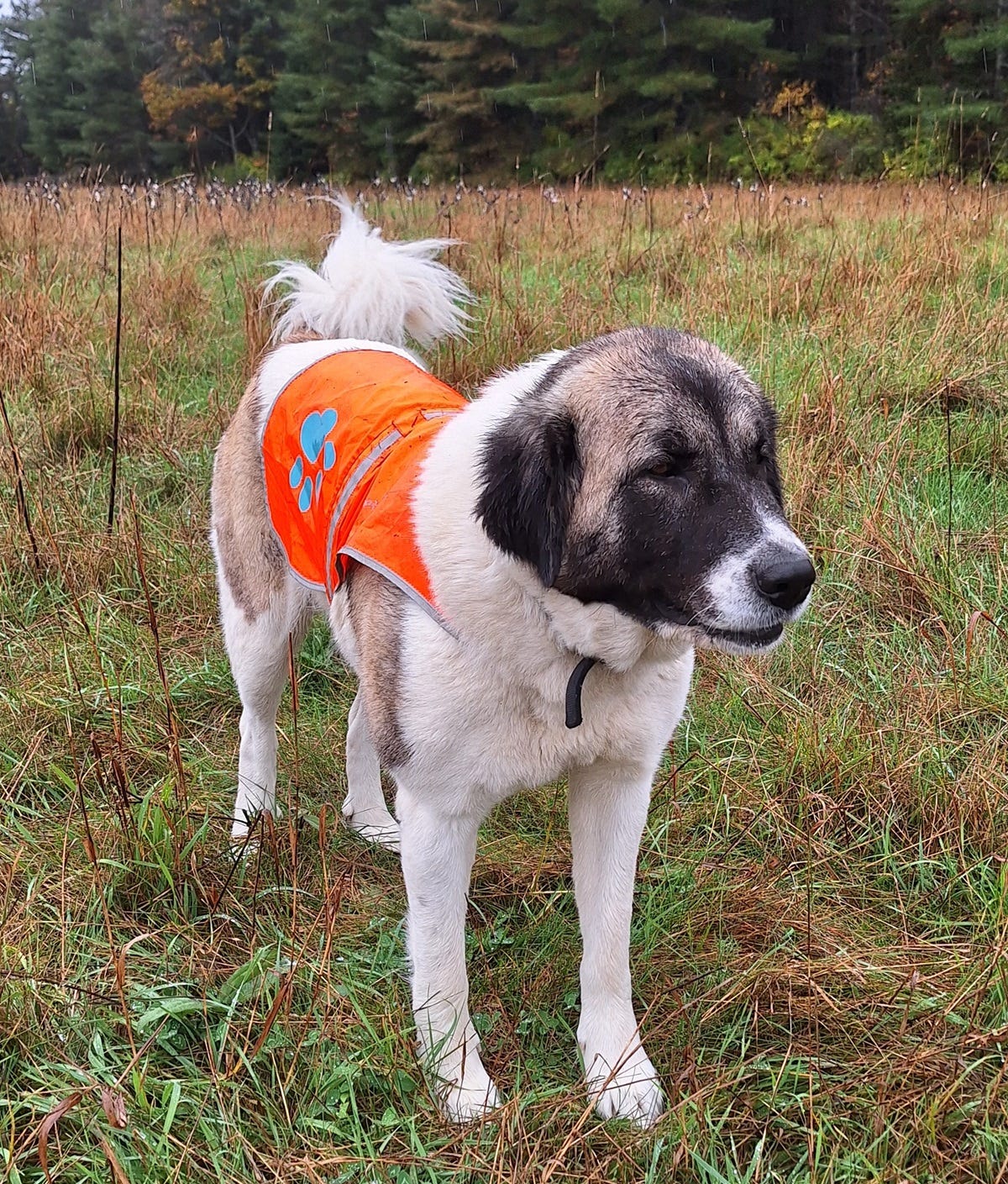

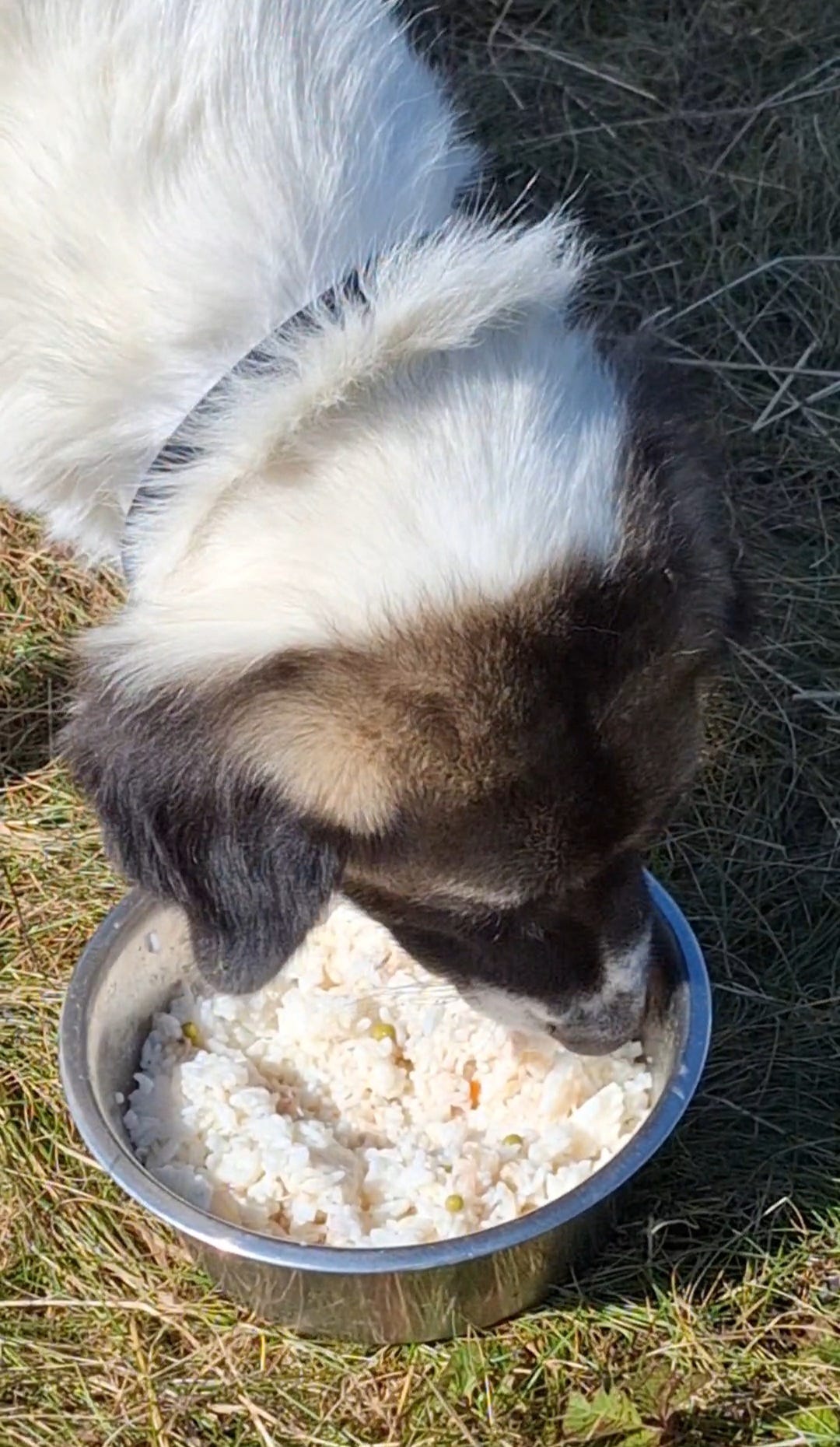



Thank you, Sheryl!🙏 I have a few strategies when it comes to how much I feed them. I started with a calculator I found online, a recommendation of how much each dog should be eating according to their size and weight. But I also watch their size...Murphy’s will eat everything I put in front of him, as labs are known to do lol, so when his waist starts losing it's definition and gets wider, I know I'm giving him too much. Beebe will only eat what she needs, so if she's leaving food in her dish she's just not needing those extra calories. And again, I'm just always conscious of the size of their waist. An overweight dog is more at risk for health issues--same as people.
I love to see that I’m not alone in home cooking for my pup. My neighbors are nutritional biologists and gave me a recipe they make for their pups. They did all the research of what nutrients dogs need and even got the food tested at General Mills to see if it had the nutritional values they wanted. I call it “muttloaf” as it is a mixture of ground beef, pork, chicken, bison (whatever is on sale) with rye flakes and oats, pumpkin, veggies, chia seeds, and parsley. I have a friend who used to own a deli and has all the commercial equipment so I go to her place once a season and make a big batch I bag up in the deep freeze. I do supplement with some
Kibble just to keep my pups tummy okay with kibble for the random times I’m on a road trip and can’t have access to a fridge.
My parents had a pup when I was a kid who was 15 and sickly. The vet put her on a homemade diet very similar to this chicken rice stew and she perked right up and lived to 20.
I do believe homemade is best.